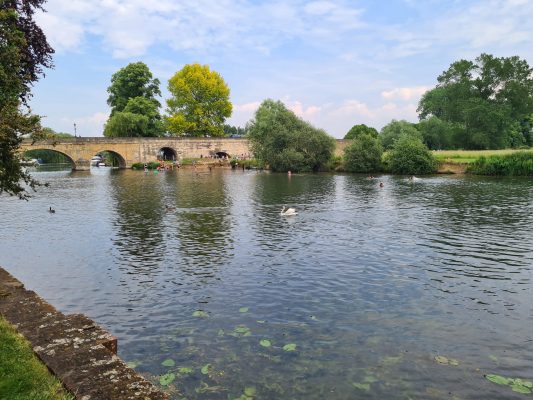Bathing water status, explained

Our rivers and waterways play an important role not only in the environment but in our culture, health, and well-being. They become even more popular during summer when people head to their local rivers to swim, kayak, paddle and enjoy the outdoors. The UK has more than 600 designated bathing waters. However, only two are located within rivers. As we approach the end of the bathing water season, which runs from May 15th to the 30th of September, and we get closer to the deadline for bathing water applications, we wanted to shed light on the meaning and importance of designated bathing water status.
What is bathing water status?
If a site has a designated bathing water status, it means that bacteria harmful to human health (such as E. coli and Intestinal enterococci) are weekly monitored during the bathing season by environmental agencies, and information on the water quality is displayed publicly. This allows river users to make informed decisions about getting in the water and potential risks.
Bathing water standards are based on World Health Organisation research into the incidence of stomach upsets in people bathing in waters with different levels of bacteria. These make their way into the rivers usually by sewage and animal manure discharges. However, other pollution sources such as agricultural and road run-off, also contribute to the current poor state of UK rivers.
The water quality is classified from excellent to poor, the latter being a piece of advice against bathing. Despite the classification, the sites remain open, but the signage ensures people are aware of health risks.
Its importance for river health
Even if the water quality of a site is rated as excellent, it doesn’t mean the river has a “good” ecological status. This is a key term in the EU Water Framework Directive, which is a policy that aims to manage, protect, and improve European water bodies. Good ecological status is defined as a slight variation from undisturbed conditions, showing low levels of distortion resulting from human activity. It’s influenced by water quality and habitat degradation.
Unfortunately, only 14% of rivers in England are considered to be at good ecological status. Bathing water designations can help increase pressure, push for much-needed changes and direct investment for improvements required for healthier rivers. The small number of rivers designated as bathing water sites reflects the neglect they’ve been facing for many years.
The River Wharfe in West Yorkshire was the first river to receive a bathing water designation, and that only happened in 2020. Last year, a stretch of the River Thames at Port Meadow, Oxford, was awarded bathing water status, making it the second one. The latter was possible by a joint effort between The Rivers Trust, Thames21, Oxford City Council, Thames Water and local volunteers.
As part of the Thames21’s Reclaim our Rivers campaign, we’re currently working on bathing water applications for Wallingford, which was rejected last year but we aim to reapply this year, and Henley-on-Thames. Both are popular spots for swimming and enjoying the river.
Back in July, Defra released new guidance to be followed when applying for bathing water status, announcing that an average of 100 bathers – kayakers, paddlers, rowers, and other river users can’t be included – should be recorded over two days on a site during peak bathing water season. However, this can’t be done when organised events are happening.
It also stated that there should be toilet facilities within 500m of the site. While the new rules helped clarify some requirements, they have also made it more difficult to have a successful application.
Bathing water designation is extremely important for our understanding of types and sources of pollution and their prevention. It legally requires water companies to reduce raw sewage discharge in our rivers, improving their health and benefitting people and wildlife. It puts environmental agencies and water companies in the spotlight, demanding better policies and effective action to protect our treasured waterways. Rivers don’t have a voice. So, it’s up to the latter and everybody else to put rivers at the top of their priorities!
